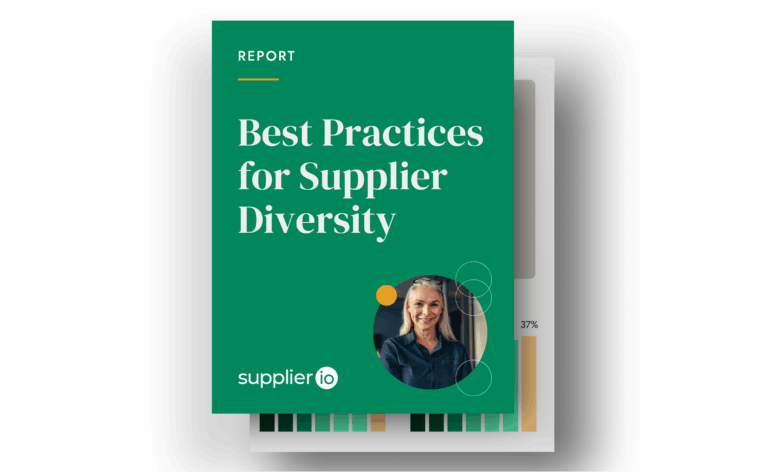Why good data is the backbone
What single aspect of your business affects the health and strength of your supplier diversity program the most? Answer: your data! Programs with strong, accurate, and reliable data place themselves in a position for success and are better able to scale their operations to promote growth.

Work smarter, not harder
One of the biggest stumbling blocks that supplier diversity programs face is unreliable data. Many programs still rely on manual and self-reported data which, in today’s fast-paced and tech-focused business landscape, can cause you to fall short of your goals.
For example, 64% of supplier diversity programs only ask for and collect supplier diversity information at time of onboarding. The time spent reaching out to suppliers, waiting for their responses, and manually inputting their information adds up quickly, and can deeply impact your program. Moreover, when programs only rely on these self-reporting methods, many actual diverse suppliers can fall through the cracks, which can keep your program from getting the credit it deserves.
Automating your data collection and reporting with a third party can give you back hours of manual work that can be used to strengthen and scale your program. When you’re free from manual work, what can your program accomplish?
Give your program credibility
Your program’s reputation is its greatest asset, and the data you present to your boardroom and the public at large plays a huge part in building that reputation.
With the stakes so high, it’s surprising that so many supplier diversity programs trust their program’s credibility with manually reported data.
When you rely on manual collection and self-reports, the chances of having inaccurate data are much higher than with automated reporting. Oftentimes, the data you get from manual collection is already out of date by the time it even gets on a spreadsheet, much less in front of your executive team.
The risks of presenting inaccurate information run deep. If your program is known to present out of date data, your executive team can lose trust in your program and withdraw their support, which can severely limit your ability to scale.
A much bigger risk is your organization going public with bad data, which can damage your brand reputation and even affect your company’s bottom line.
Automated data that is regularly updated and quality assurance tested makes these risks a thing of the past. With less time spent worrying about whether the data is right, you can invest more time in using that data to optimize.
Gain buy-in within your organization
While supplier diversity leaders often feel like (or are!) an island of one, the most successful programs are able to gain buy-in and leverage support across their organization. The way they create the trust needed for that buy-in? Having the most accurate data possible.
Your executive board especially can prove to be powerful allies as you scale your program, but before they can give actionable support, they expect to see hard metrics that show your program’s progress and potential. When you walk into the boardroom, having good data gives your company’s leaders the reassurance they need that your program is worth investing time and resources into, and that the ROI will be worth the cost.
Give your program the boost it needs by making sure the data you present is impeccable.
Conclusion
It’s easy to underestimate the true power of good data. However, it may be the difference between your program falling short of its goals or reaching new heights year after year. Whatever your goals for your program are as you plan your next steps, make sure that you prioritize having the best data available.
Ready to take your data reporting to the next level? Contact our sales representatives to learn how Supplier.io’s powerful automation can help you.




